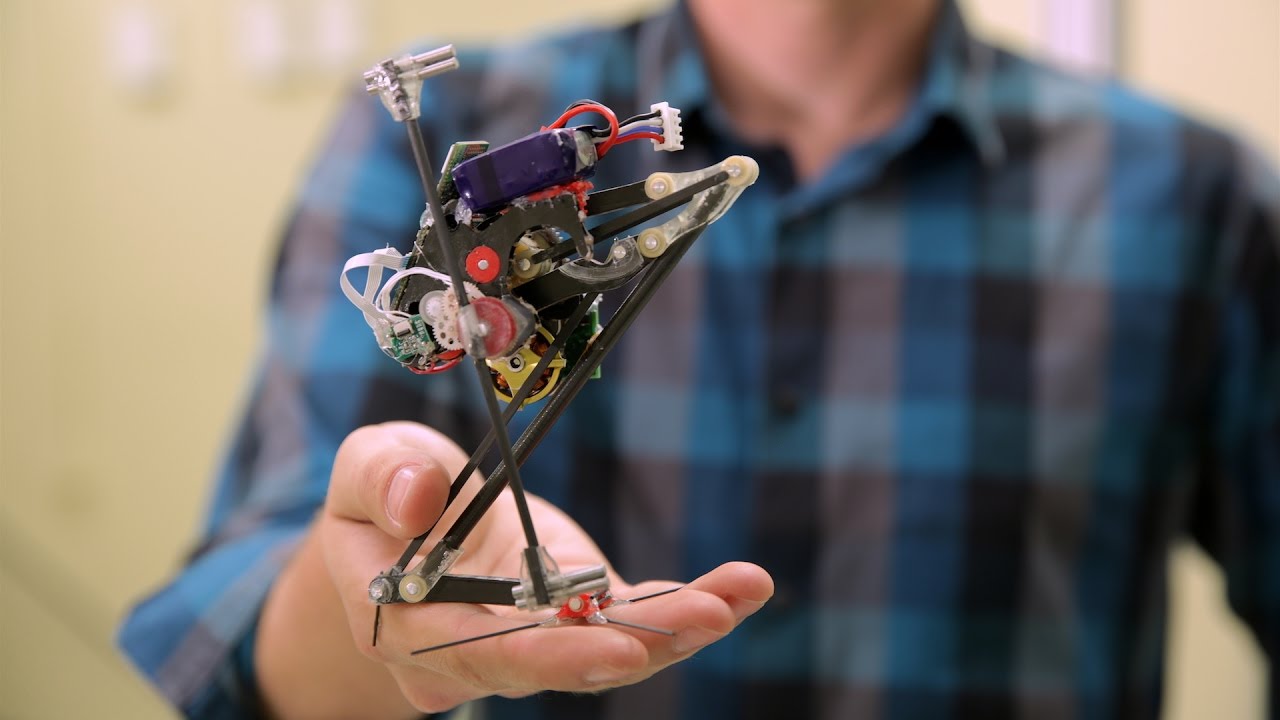Robots come in bewildering forms
A significant number of the latest robot designs are borrowed from nature. Robots can now walk like humans or four-legged animals. Robots can mimic individual animals but they can also mimic collective behavior. Copying and evolving animal physiology is amazing, what about imitating how creatures learn?
Nature kinda knows what it's doing when it comes to getting things done. So we developed biomimicry. Biomimicry is the imitation of elements of nature for solving complex human problems. Modern robots can walk like humans or four-legged animals. Robots can even slither like snakes and crawl like insects.
Over the past couple years robots have started showing up all over the place. Robots using an astounding range of forms which roboticist have borrowed from nature. Evolution was the greatest creative force in the world until people started innovating. It helped animals conquer: sea, land, and air. So it's here where roboticists often look for inspiration.
Robot animals
First up snake bot: these robots are 16 individual motors or actuators. How they're arranged allows us to take on many three-dimensional shapes. Among other things, this allows them to do things like sidewind. So you can actually see the robot here is moving a lot like desert dwelling side-winding snakes.
Snake bot is very serpentine yet its researchers never set out to copy a snake muscle for muscle and bone for bone. They wanted a snake's mobility. Snakes can climb and squeeze through tight spaces and so can snake bot. Copying a snake's physiology exactly it would be both impossible and unnecessary. Where a snake needs a full circulatory system a bot doesn't. Omitting parts allows engineers to be flexible. With a simpler design they can actually pull off maneuvers like this that a real snake never could.
It won't be jumping any time soon but the robot Salto already is.

Salto, a one-legged robot inspired by a critter called the bush baby, has a vertical leap of over a Meter. Bush babies bounce about like springs. They use a super crouched posture, where they store a lot of energy and suddenly release it. It's the same with Salto, but that's just the start of the challenge bounding about. Salto sets its orientation in the air based on where it is, how fast it's going, where we want it to be. In the air it picks an orientation to land with. Once it lands: we detect contact, apply a little burst of energy to get it back off the ground, and then repeat.
Inspired by the stickiness of gecko feet this tiny wonder, Micro Tug, can pull 2,000 times its own weight. That's like you dragging 300,000 pounds. The secret is a whole bunch of tiny rubber hairs that stick the robots in the ground. A group of them tethered together even pulled a car at Stanford .
But why crawl when you can fly? At Caltech researchers have built a robot bat. It's got a skeleton of carbon fiber and wings made of silicon. The robot bat is another case where researchers didn't bother exactly copying. These wings have nine joints instead of 40 you'd find in a real bat. Natural selection crafted the bat over millennia. Roboticists took nature's bat design and simplified it over a few months.
Robotic behavior
Copying and evolving animal physiology is amazing, what about replicating how animals learn? This is Direct. It's actually teaching itself to walk by falling down. It tries new gates and selects the ones that work best in a certain environment. Out in the snow it adjusts to lower its center of gravity for more stability. It adapts to an environment like real species do in nature.
Robots can mimic animals but they can also mimic collective behavior. Ants are great at working together to build their homes. MicroBots collaborate like ants to build impressive structures like this lattice. Some robots deposit glue and others add rods. "We can have robots that specialized in handling active components. You know like: resistors, ... LEDs." That means MicroBots could work together to build complex structures. Structures sturdier than what you'd get with 3D printing.
Biomimicry can also help scientists better study and protect animals. Take this robotic fish from MIT. It swims by pumping water into two opposing chambers in the tail. Researchers remote-control it not with radio waves. Which don't work ...[well] ... underwater but with acoustic signals. One day the robot could swim autonomous, blending with other life in coral reefs. That would give scientists unprecedented insight into these ecosystems.
So from a robot bird, to a robot snake, to a robot whatever this is machines inspired by nature are making big strikes.